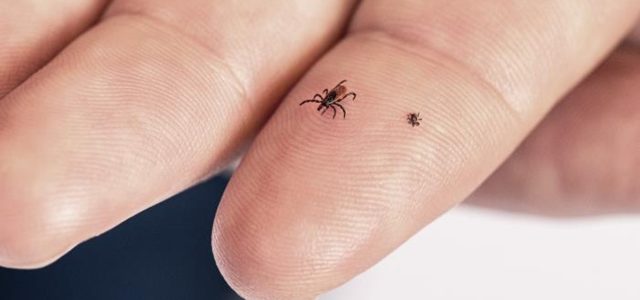
Most people worry when they find a tick, but few realize that its size can change everything. Does a smaller tick mean lower risk — or greater danger?
Yes and No. The size of the tick matters for the early detection of Lyme disease.
Understanding Tick Sizes
Both nymph and adult ticks can transmit Lyme and other tick-borne diseases if they’ve fed on an infected host.
The increased risk lies in the size of the tick and likelihood that it will be detected.
Deer ticks go through several life stages:
Nymph ticks are roughly the size of a poppy seed (1-2mm). Their tiny size makes them nearly invisible on skin, especially in hair or skin folds. Most people never see or feel them.
Adult ticks are about the size of a sesame seed when unfed (3-5mm). They’re more visible but still small enough to hide in areas like the scalp, groin, armpits, and behind knees.
Why Adult Ticks Still Pose Significant Risk
Many people mistakenly believe that if they can see and feel a tick, it’s less dangerous. That’s not true.
Adult ticks deserve your full attention because:
They carry high infection rates. In endemic areas, adult deer ticks commonly carry Borrelia burgdorferi (the bacterium causing Lyme disease).
They’re more likely to carry multiple infections. Adult ticks have fed twice before—as larvae and nymphs—giving them more opportunities to pick up pathogens. They frequently carry co-infections like Babesia and Anaplasmosis alongside Lyme disease.
Co-infections complicate illness. When you’re infected with multiple pathogens, symptoms are often more severe, recovery takes longer, and treatment becomes more complex. Standard Lyme antibiotics alone may not address all infections.
They still go unnoticed. Despite being larger, adult ticks attach in hidden areas where they can feed for days undetected.
What Tick Engorgement Tells You
The physical appearance of an attached tick provides clues about how long it’s been feeding.
Flat and dark: Recently attached, likely within a day. The tick looks thin and dark brown or black.
Partially swollen: The tick is feeding actively and beginning to swell. It appears gray-brown and rounded.
Fully engorged: The tick looks like a gray-blue grape or bean, translucent and swollen. This indicates prolonged attachment—often several days.
The more engorged the tick, the longer it’s been attached and the higher your risk of infection.
When to See a Doctor
If you find an attached tick, note how long it’s been there. If you develop fatigue, fever, or a rash (especially a bull’s-eye rash) within several weeks of a bite, see your doctor right away. While early antibiotics help, over 20% of treated patients remain chronically ill.
In my practice, I also recommend these daily precautions:
- Do daily tick checks after being outdoors.
- Pay close attention to hidden areas: scalp, waistline, groin, and armpits.
- Shower within two hours after outdoor exposure.
- Place clothes in a dryer on high heat for 10 minutes.
- Use repellents with DEET, picaridin, or permethrin-treated clothing.
Prompt tick removal greatly reduces infection risk — even if the tick was infected.
The Bottom Line
Does the size of the tick matter for Lyme disease? Yes — but only because larger ticks are easier to spot and remove before they transmit infection.
Both nymph and adult ticks are capable of carrying Lyme disease and co-infections.
Stay vigilant, check yourself after every outdoor activity, and remove any attached ticks promptly. Early detection and removal remain your best protection against Lyme disease.
Have you found a tick? Share your experience below—your story might help someone else recognize the risk and act quickly.


